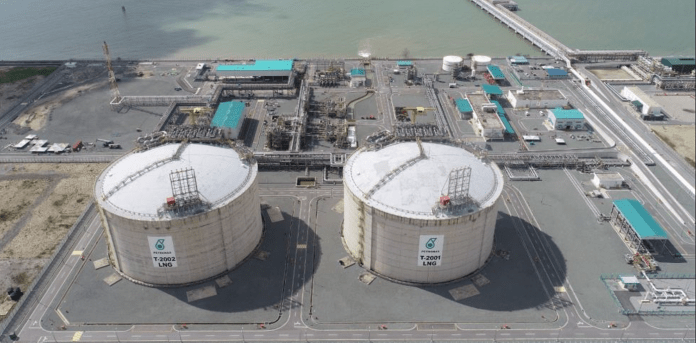Petronas’ 1HFY23 revenue was weaker mainly due to lower average JCC price of USD85/bbl (1HFY22: USD98/bbl), weaker Brent price of USD80/bbl (1HFY22: USD108/bbl), weaker average selling prices for downstream products that include petrochemicals and refined oil products, lower production entitlement volumes at the upstream segment, and decreased sales volumes for gross LNG and crude oil.
This contributed to a weaker 1HFY23 core net profit of RM38.8b, which was also dragged by higher product costs in the gas segment, and weaker refining and petrochemical margins in tandem with lower ASPs. Nevertheless, the earnings decline was partially cushioned by a stronger USD/MYR rate of 4.46, lower taxation, and a spike in sales volumes for petroleum products and petrochemicals.
Petronas’ capex spend in 1HFY23 spiked by 13% YTD to RM21.4b – which translates to the group’s highest 6M capex spend since 1HFY16. YTD spending translated to 28% of the group’s full-year capex guidance of RM60b. Hence, this alludes to bumper spending in 2HFY23, particularly in 4QFY23 due to seasonality. In comparison, capex spending in 1HFY22 and 1HFY21 constituted 23% and 20% of their respective full-year figures. As such, the house deems 1HFY23 capex spend momentum to be largely in line with historical trends. Based on Kenanga’s view, robust 1HFY23 spending is reflective of Petronas’ efforts to ramp up capex to capitalize on current high oil prices. Furthermore, given energy transition trends, this is the opportune time to monetize fossil fuel resources before their adoption declines. Evidently, the lion’s share (82%) of 1HFY23 capex spend was allocated to its core hydrocarbons business. Meanwhile, 14% and 4% were apportioned to the new business (which includes clean energy solutions) and net zero carbon emissions segments, respectively.
Meanwhile, the group’s balance sheet remains strong in 2QFY23 as evident from its ballooning cash pile of RM218b (2QFY22: RM204b). Hence, this will enable the group to comfortably meet its dividend commitments and ramp up capex spending simultaneously. Correspondingly, Petronas announced that it will pay a total of RM40b in dividends to the government this year. This translates to an increase of RM5b versus its previous announcement in June where it committed to paying an RM35b dividend.
On the back of resilient oil prices and anticipation of a ramp-up in capex by Petronas, the house expects sustained traction in O&G contract flows. To recap, Petronas targets to spend RM300b in capex over CY23-27. This translates into substantial annual capex of RM60b vis-à-vis average spend of RM42b p.a. over the past 5 years.
Correspondingly, based on Petronas’ Activity Outlook 2023-35, YoY demand will rise in 2023 for most jobs and projects. This
includes fabrication of wellhead platforms, decommissioning of platforms/subsea trees, supply of offshore support vessels and jack-up rigs, topside maintenance, platform maintenance, construction and modification, and offshore hookup and commissioning. As such, Kenanga believes that domestic upstream service providers such as UZMA, are leveraged toward a recovery in daily charter rates (DCR), fleet utilization and new contract awards.
Meanwhile, on the international front, IHS Markit expects global offshore exploration and production capex to expand by 12% YoY to USD151b in CY23. On the same note, the global FPSO market remains upbeat – where Clarksons’ anticipates an alltime high award of 11 newbuild FPSOs in 2023 with a total value in excess of USD19b. This will be mainly driven by Brazil (five potential orders), Guyana (two contenders), and West Africa (four prospects). Therefore, this bodes well for ARMADA and YINSON.









